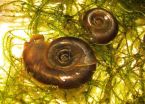(Press-News.org) ROCHESTER, Minn. -- Researchers at Mayo Clinic have shown that it is possible to detect endometrial cancer using tumor DNA picked up by ordinary tampons. The new approach specifically examines DNA samples from vaginal secretions for the presence of chemical "off" switches -- known as methylation -- that can disable genes that normally keep cancer in check.
The finding is a critical step toward a convenient and effective screening test for endometrial cancer, which is the most common gynecologic malignancy in the United States. The results are published in the journal Gynecologic Oncology.
"Unfortunately, there is no equivalent to a Pap smear or a mammogram for endometrial cancer," says Jamie Bakkum-Gamez, M.D., a gynecologic oncologist at Mayo Clinic and lead author of the study. "We know that the earlier a woman is diagnosed, the better the likelihood is that she is going to have a positive outcome from cancer treatment. Our goal is to use our findings to develop a tool for the early detection of endometrial cancer that women could use in the comfort of their own homes."
The American Cancer Society estimates that over 50,000 new cases of endometrial cancer will be diagnosed in 2015. Though the malignancy is more common in white women, blacks are usually diagnosed at a later stage and are more likely to die from the disease. In most cases, women discover they have endometrial cancer only after abnormal vaginal bleeding prompts a visit to the doctor. However, more insidious molecular changes take place long before such symptoms appear.
Before a cell can turn cancerous, it has to subvert the genetic checks and balances that normally keep it from growing out of control. Thousands of different genes likely play a role in suppressing the development of tumors. In cancer, these tumor suppressor genes are often mutated outright or simply masked with chemical tags or methyl groups known as methylation. Previous research has shown that a wide variety of genes are turned "off" by such methylation in different types of cancer, leading many investigators to explore how these molecular markers could be used to diagnose or even treat the disease.
A small study published in 2004 showed that DNA samples collected from tampons was excessively methylated or hyper-methylated in women with endometrial cancer compared to women without the disease. However, in the years since then little progress has been made in turning the approach into a practical screening test.
"No one really took that idea and ran with it," says Dr. Bakkum-Gamez. "We wanted to take this initial study one step further, and use advances in technology to see if we could develop a better method of differentiating between cancerous and benign cells."
First, Dr. Bakkum-Gamez and her colleagues obtained samples from 66 women who were about to undergo a hysterectomy, 38 because of endometrial cancer and 28 due to other indications. Each woman used an intravaginal tampon to collect vaginal secretions and also underwent endometrial brushing, a procedure that uses a wire brush to scrape cells from the inner lining of the uterus.
The researchers isolated DNA from the samples and then analyzed 97 methylation sites along 12 different genes, half initially discovered by members of the research team and half previously reported by other researchers. They found that methylation was higher in specimens from women with endometrial cancer for 9 of the 12 genes analyzed. The results were similar regardless of whether DNA was acquired through a tampon or endometrial brushing.
Despite the encouraging results, the researchers say they need to further refine their method before it can be used clinically. Now, Dr. Bakkum-Gamez and her colleagues are looking for additional genes that are mutated or methylated in the earliest stages of endometrial cancer. Once they have the final lineup of genes to use in the test, they plan to validate the test using samples obtained through a clinical trial that is currently accruing 1,000 women at higher risk of endometrial cancer.
The final product may look very similar to Cologuard, an at-home screening kit recently approved by the FDA. Cologuard was co-developed by Mayo Clinic and Exact Sciences, and analyzes DNA from stool samples for alterations associated with colon cancer.
"Cologuard could revolutionize colon cancer screening, and our test has the potential to do the same for endometrial cancer," says Dr. Bakkum-Gamez. "At the heart of this approach is a desire to make cancer screening patient-centered, by using a product that is already widely accepted and readily available, even in resource-poor settings."
INFORMATION:
Co-authors of the paper include: Matthew Maurer, Kieran Hawthorne, Jesse Voss, Trynda Kroneman, Abimbola Famuyide, M.B.B.S., Amy Clayton, M.D., Kevin Halling, M.D., Ph.D., Sarah Kerr, M.D., William Cliby, M.D., Sean Dowdy, M.D., Benjamin Kipp, Ph.D., Andrea Mariani, M.D., Ann Oberg, Ph.D., Karl Podratz, M.D., Ph.D., and Viji Shridhar, Ph.D., all of Mayo Clinic
The study was funded by the Mayo Clinic Specialized Program of Research Excellence (SPORE) in Ovarian Cancer from the National Institutes of Health, the Office of Women's Health Research Building Interdisciplinary Careers in Women's Health (BIRCWH), Mayo Clinic's NCI Cancer Center Support Grant, and the Intramural Research Program of the National Cancer Institute.
About Mayo Clinic Cancer Center
As a leading institution funded by the National Cancer Institute, Mayo Clinic Cancer Center conducts basic, clinical and population science research, translating discoveries into improved methods for prevention, diagnosis, prognosis and therapy. For information on cancer clinical trials, call 1-855-776-0015 (toll-free).
About Mayo Clinic
Mayo Clinic is a nonprofit organization committed to medical research and education, and providing expert, whole-person care to everyone who needs healing. For more information, visit http://mayocl.in/1ohJTMS, orhttp://newsnetwork.mayoclinic.org/.
Machine-made products today are often of very good quality, and many are relatively cheaper than their handmade counterparts. But they are missing the key ingredient of "love," according to a new study in Journal of Marketing.
"Handmade products might be perceived to contain and transmit the artisan's "essence" in the form of his or her love for the product in a way that machine-made products cannot," write authors Christoph Fuchs (Technische Universität München), Martin Schreier (WU Vienna University of Economics and Business), and Stijn M.J. van Osselaer ...
CORVALLIS, Ore. - Researchers at Oregon State University have discovered a group of genes in one species of snail that provide a natural resistance to the flatworm parasite that causes schistosomiasis, and opens the door to possible new drugs or ways to break the transmission cycle of this debilitating disease.
Schistosomiasis infects more than 200 million people in more than 70 countries, and is most common in areas with poor sanitation. It can cause chronic, lifelong disability, beginning with gastrointestinal problems and sometimes leading to liver damage, kidney failure, ...
Legal drugs such as OxyContin now kill more people than heroin and cocaine combined. While awareness of the dangers of illegal drugs has increased, many teens are still ignorant of the significant physical danger posed by legally prescribed drugs, according to a new study in Journal of Public Policy & Marketing.
"The CDC has classified the situation as an epidemic," write authors Richard Netemeyer (University of Virginia), Scot Burton (University of Arkansas), Barbara Delaney (Partnership for Drug Free Kids), and Gina Hijjawi (American Institutes for Research). "Prescription ...
MADISON, Wis. -- It's almost a rite of passage in physics and astronomy. Scientists spend years scrounging up money to build a fantastic new instrument. Then, when the long-awaited device finally approaches completion, the panic begins: How will they handle the torrent of data?
That's the situation now, at least, with the Square Kilometer Array (SKA), a radio telescope planned for Africa and Australia that will have an unprecedented ability to deliver data -- lots of data points, with lots of details -- on the location and properties of stars, galaxies and giant clouds ...
By comparing the genes of current-day North and South Americans with African and European populations, an Oxford University study has found the genetic fingerprints of the slave trade and colonisation that shaped migrations to the Americas hundreds of years ago.
The team, which also included researchers from UCL (University College London) and the Universita' del Sacro Cuore of Rome, analysed more than 4,000 previously collected DNA samples from 64 different populations, covering multiple locations in Europe, Africa and the Americas. Since migration has generally flowed ...
Virginia Commonwealth University School of Medicine researchers have discovered a biological clue that could help explain why some drinkers develop a dependence on alcohol and others do not.
The findings move researchers closer to identifying those at risk for addiction early and designing better drug treatments to help people stop drinking.
About 18 million people in the United States have an alcohol use disorder, according to National Institutes of Health statistics. The vast majority go untreated.
"There are few and inadequate pharmacological treatments to help ...
More schooling -- and the more mentally challenging problems tackled in those schools -- may be the best explanation for the dramatic rise in IQ scores during the past century, often referred to as the Flynn Effect, according to a team of researchers. These findings also suggest that environment may have a stronger influence on intelligence than many genetic determinists once thought.
Researchers have struggled to explain why IQ scores for developed nations -- and, now, developing nations -- have increased so rapidly during the 20th century, said David Baker, professor ...
Queen's University cancer researcher Madhuri Koti has discovered a biomarker that will help lead to better predictions of the success of chemotherapy in ovarian cancer patients. This discovery could lead to better treatment options in the fight against ovarian cancer.
Biomarkers are an indicator of a biological state or condition.
"Recent successes in harnessing the immune system to combat cancer are evidence for the significant roles of a cancer patient's immune responses in fighting cancer," explains Dr. Koti (Biomedical and Molecular Sciences). "Many of these success ...
National Democratic Party Member of Parliament Megan Leslie is calling on the Canadian government to list microbeads, tiny plastic flakes used in cosmetics, as a potential toxic substance. Health Canada claims the beads are safe for use as an additive, but Leslie says they pose a danger to the aquatic environment.
Researchers at the University of Waterloo are warning that microbeads and plastic debris of all sizes could be a bigger environmental problem for the Great Lakes than previously thought.
"We know more and more about ocean plastics, but, paradoxically, we have ...
If we are ever to fully harness the power of light for use in optical devices, it is necessary to understand photons - the fundamental unit of light. Achieving such understanding, however, is easier said than done. That's because the physical behavior of photons - similar to electrons and other sub-atomic particles - is characterized not by classical physics, but by quantum mechanics.
Now, in a study published in Physical Review Letters, scientists from Bar-Ilan University have observed the point at which classical and quantum behavior converge. Using a fiber-based ...

